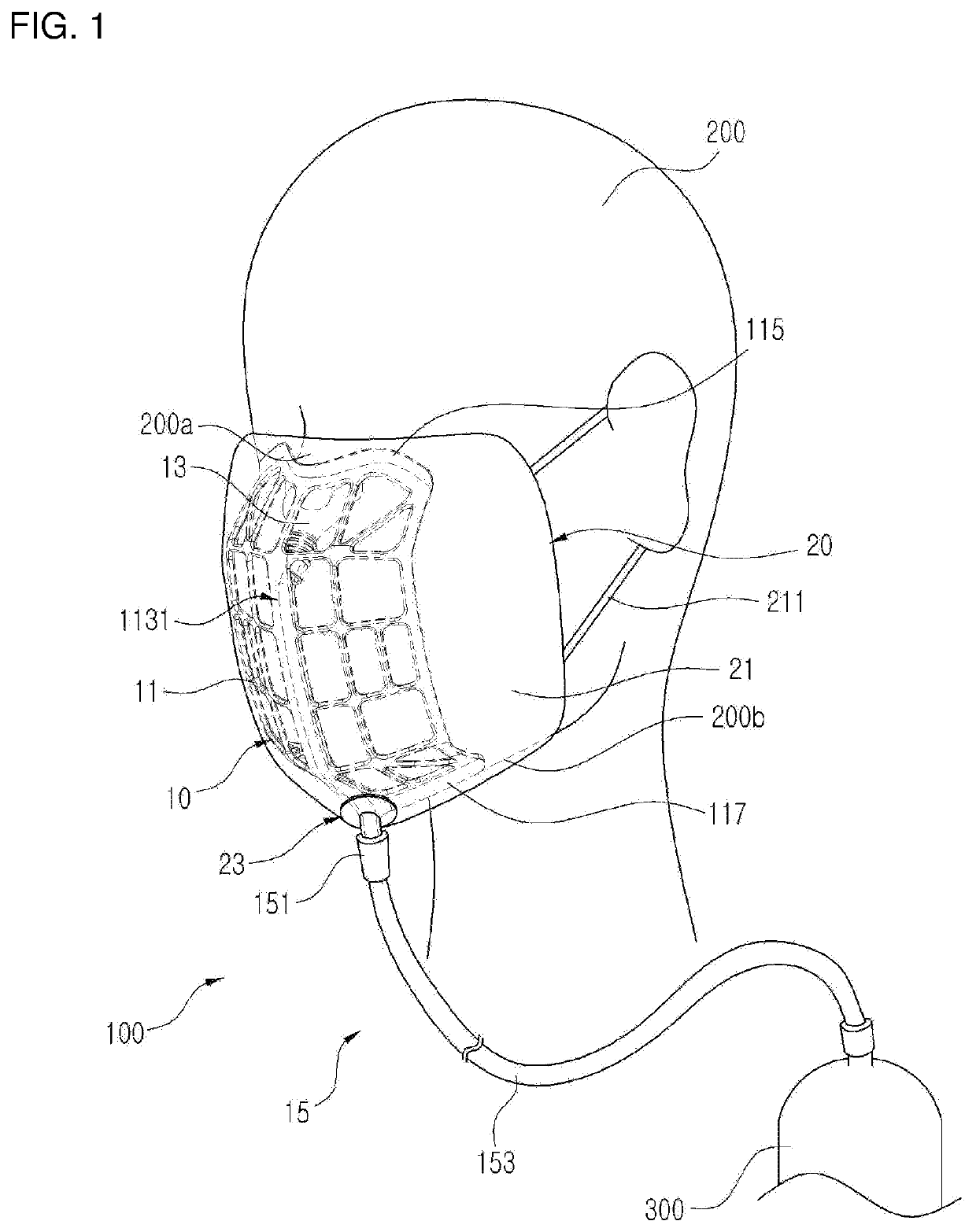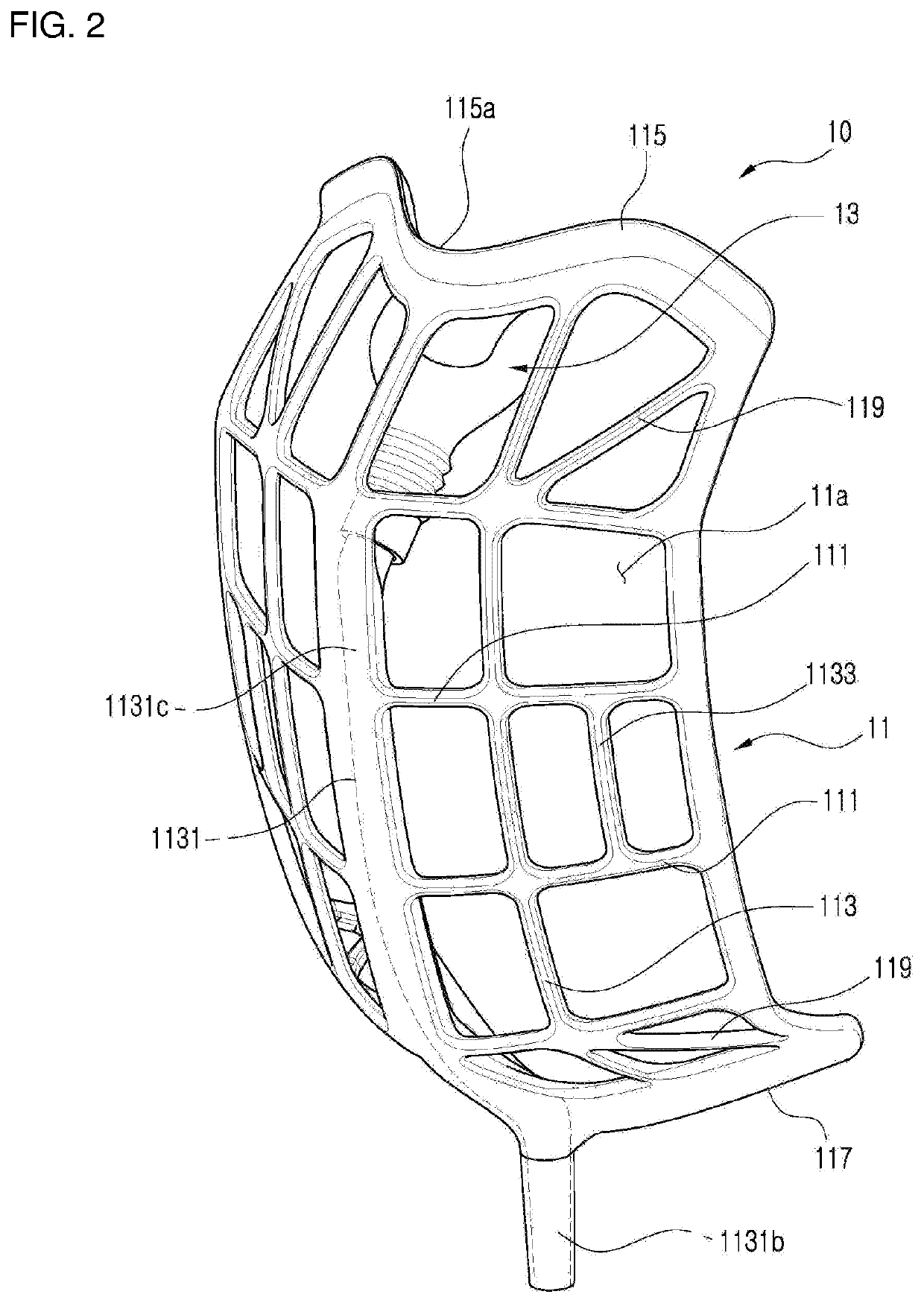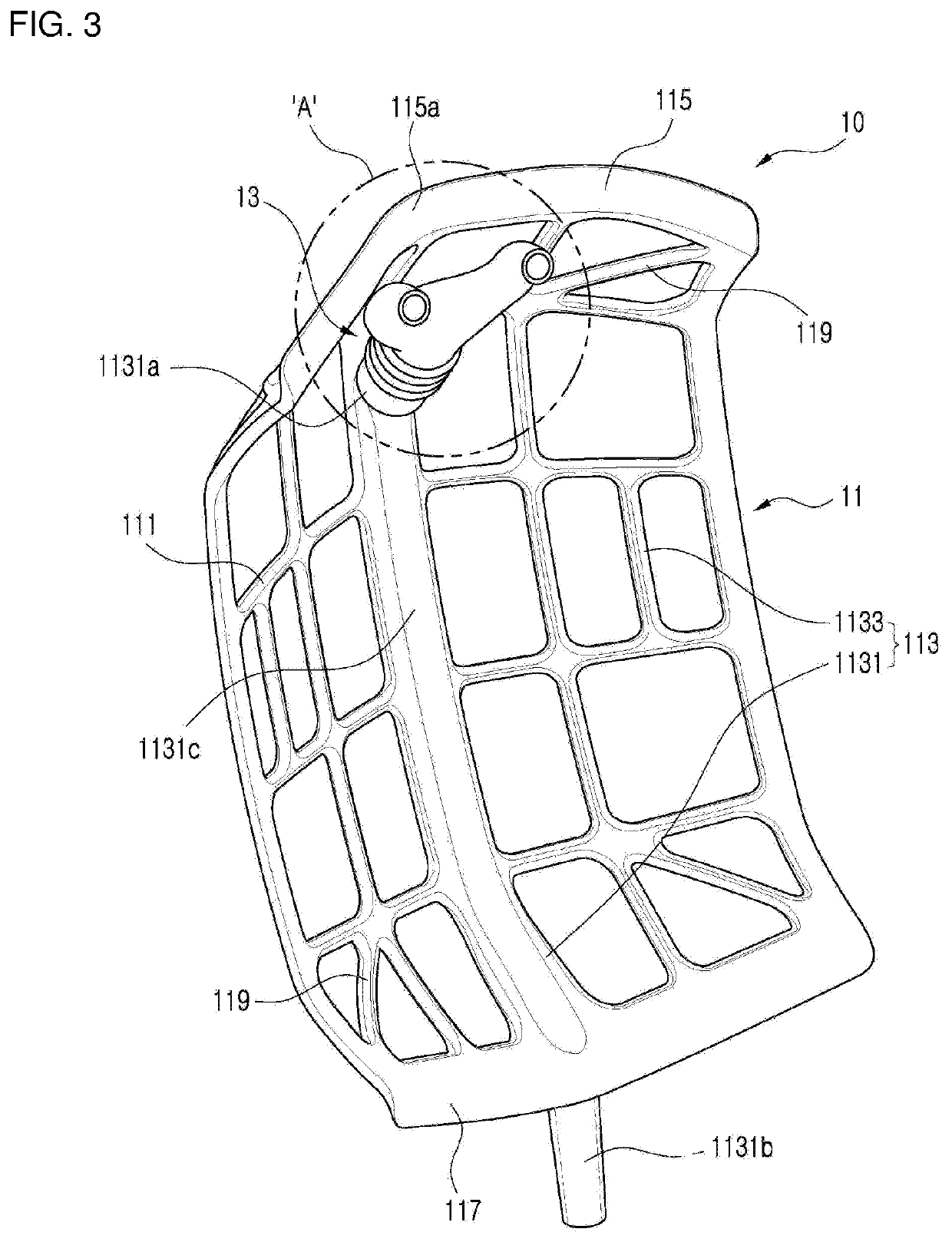Mask-type nasal cannula
a cannula and mask technology, applied in the field of nasal cannulas, can solve the problems of inconvenience for patients, inflammatory responses in the lung, and inability to effectively relieve pain, so as to minimize the inflow of external air, prolong the wear, and reduce the effect of fluid resistan
- Summary
- Abstract
- Description
- Claims
- Application Information
AI Technical Summary
Benefits of technology
Problems solved by technology
Method used
Image
Examples
Embodiment Construction
Technical Problem
[0009]The present invention has been made in an effort to solve the above-mentioned problems and provides a nasal cannula which can tightly adhere to the face of the patient when it is coupled with the particulate matter mask to minimize the inflow of external air and allows a long time wearing without bad effects on the body of the patient.
Technical Solution
[0010]A nasal cannula according to an embodiment of the present invention includes: an oxygen supplying portion which forms a space inside in which a nose and a mouth of a user can be disposed and is able to supply oxygen in a state of being put on by the user into the nose of the user; and a mask portion to which the oxygen supplying portion is attached in a detachable manner therein and is configured to be put on a face of the user.
[0011]The oxygen supplying portion may include: a frame portion which is formed in a dome structure so as to form the space inside, a flow passage allowing oxygen supplied from outs...
PUM
 Login to View More
Login to View More Abstract
Description
Claims
Application Information
 Login to View More
Login to View More - R&D
- Intellectual Property
- Life Sciences
- Materials
- Tech Scout
- Unparalleled Data Quality
- Higher Quality Content
- 60% Fewer Hallucinations
Browse by: Latest US Patents, China's latest patents, Technical Efficacy Thesaurus, Application Domain, Technology Topic, Popular Technical Reports.
© 2025 PatSnap. All rights reserved.Legal|Privacy policy|Modern Slavery Act Transparency Statement|Sitemap|About US| Contact US: help@patsnap.com



